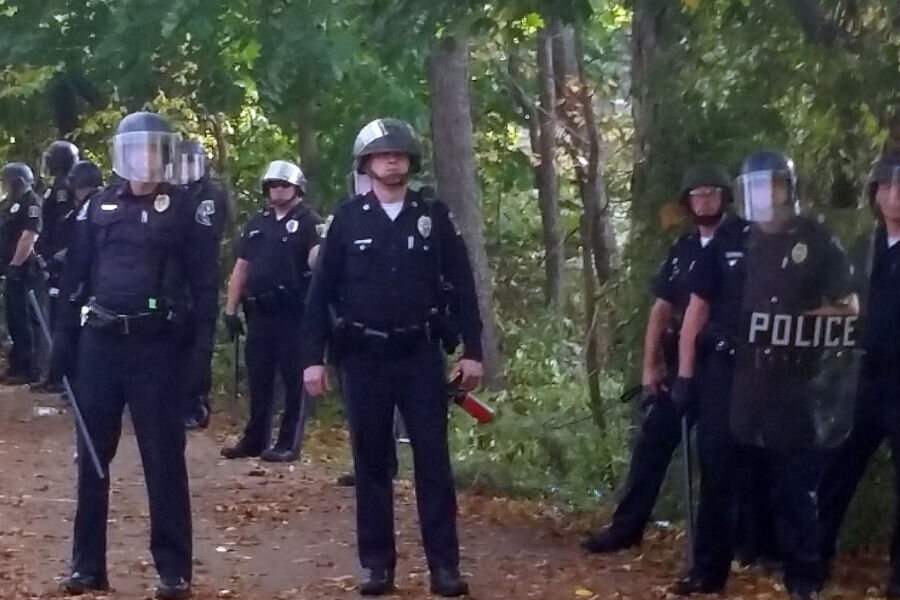Keene Pumpkin Festival fits trend: students rioting for no good reason
Loading...
Of all the events likely to set off a fully fledged student riot of car tipping, broken signs, and open street fires, the Pumpkin Festival in Keene, N.H., would probably not top many lists.
Yet that is precisely what happened Saturday night as an event famous for setting a world record last year with 30,581 lit jack-o'lanterns turned into a wild scene that ended in pepper spray, tear gas, and dozens of arrests.
The riot comes as some experts note a change in student riots. Long past are the days when they were mostly protests or expressions of student discontent. In recent years, it seems, many students just see them as a fun part of the college experience.
"It's become part of – for some people – part of the male role of being a college student," Jerry Lewis, an emeritus professor of sociology at Kent State University in Ohio, told USA Today. "Sometime during your [college] experiences you are supposed to ... participate in a riot."
Reports suggest that the riot began when a large party got out of hand. Keene State University students, as well as visitors from other colleges, are thought to have started the riot. Police managed to regain control around 1:30 a.m.
The riot fits with recent trends on college campuses, where riots have become more spontaneous and commonplace. For example, colleges involved in this spring's Final Four basketball tournament saw riots, as have a number of other campuses. Some of the riots are sports-related, but many – like the ones in Keene Saturday – appear to have no apparent cause other than students' bad behavior spiraling out of control.
Alcohol has been cited as a catalyst for student riots, but some experts question whether that isn't merely an excuse for students to behave badly.
"The way I think about drinking, it gives people permission to do what they wanted to do anyway," Professor Lewis said.
That appeared to be the motivation for some Saturday.
"It's just like a rush. You're revolting from the cops," Steven French, 18, who was visiting from Haverhill, Mass., told the Keene Sentinel. "It's a blast to do things that you're not supposed to do."
In 2005, a year after a week-long celebration at Iowa State University turned into a riot, sociology professor David Schweingruber surveyed one of his classes. The results were that 24 percent of the men and 11 percent of the women said they'd like to participate in a riot during college. Some 49 percent of men and 28 percent of women said they'd like to watch a riot during college.
He noted that his survey was a small sample size and not scientific, but he also noted that the number of nonprotest campus riots in 1985 was fewer than five. By 2002, it was up to 30.
"If a lot of people want to riot, there's not a lot we can do to stop it," Professor Schweingruber told the Iowa State Daily.
For some, the culture even appears to be becoming a badge of pride. Earlier this year, Barstool Sports, a blog for college men, boasted: "No campus is safe. No ice cream truck is safe. It’s total mayhem in our country’s colleges. I dare somebody to have a normal old-fashioned party without it turning into a full-scale riot with rubber bullets and pepper spray balls flying. You can't."







